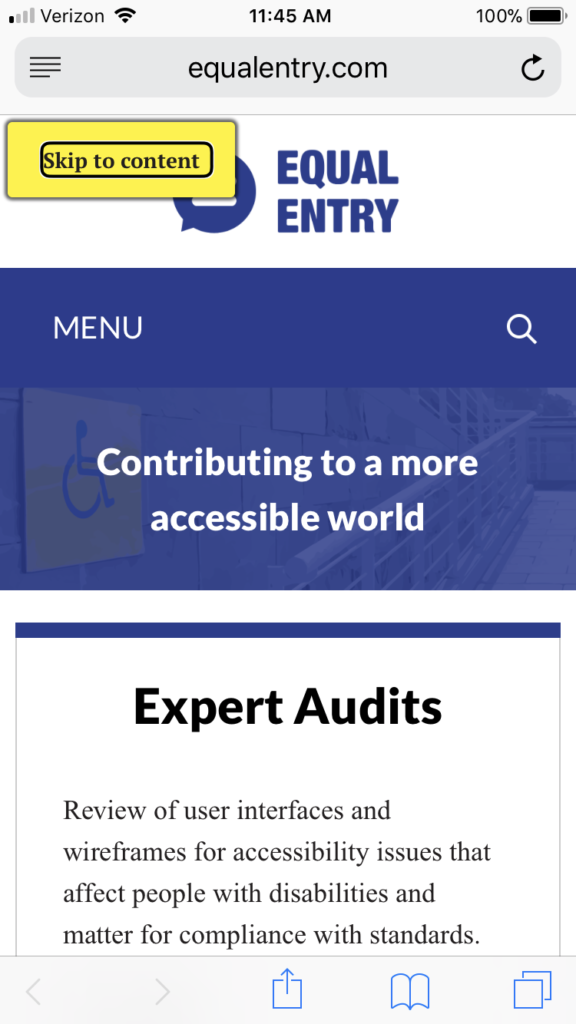Summary
by Sofia Gallo
Most iPhone owners do not even know it exists, but every Apple phone comes with a feature called VoiceOver — a screen reader that allows visually impaired people to use an iPhone without looking at the screen. Like web screen readers, VoiceOver (and others such as Android’s TalkBack) reads any text out loud for the user. This gives visually impaired people access to all parts of the phone, include messages, websites and email.

Mobile screen readers do much more than simply read text on the screen. Without a screen reader, it would be almost impossible to use a touch screen, because users would have to guess where to touch to open an app, which would make any simple task tedious. Mobile screen readers solve this problem by changing the way the touch screen works and adding gestures that allow visually impaired users to navigate through the phone’s interface efficiently.
Normally, tapping something on the screen opens it. However, with a mobile screen reader, when the user taps an item, the screen reader announces what the item is without opening it. Quickly double-tapping the item opens it. Therefore, if I tap the email icon on the screen, the screen reader will say “mail” but nothing else will happen.
If mail is the icon I want to open, I quickly double-tap it, which opens the mail application. While having to double-tap items every time may seem slow, it eliminates the touching guessing game, and the gesture becomes second nature – just as most people do not think about it when they double-click using a mouse. Other gestures that allow users to control the screen include flicking right and left to hear the next or previous item on the screen announced, and swiping down with three fingers to hear the entire page read out loud.
While mobile screen readers give users access to almost all parts of the phone – including providing a more effective way to control the screen – they face similar limitations to web screen readers. In order for mobile screen readers to provide useful information, developers need to code their apps with accessibility in mind.
Apple, for example, builds all of its apps to be compatible with VoiceOver, which means visually impaired users do not have to worry about new apps being inaccessible or future apps making existing apps incompatible with VoiceOver.
A screen reader can read any text (even if it is a picture with a caption, but it will not recognize pictures or graphics unless they have hidden text describing them. An icon of a phone may provide useful information to a sighted user, but the screen reader has no way of conveying that the picture is a phone unless the developer labels it as such.
Over the last decade, phones have become an essential part of everyday life. Texting on the go, answering a work email while away on a business trip, or checking social media as a distraction during the daily commute have become common.
Not being able to use smartphones would mean being left out of significant social interactions, having limited communication with others, and – in some cases – being unable to perform essential functions of a job that a person is otherwise qualified for.
Despite some accessibility challenges, mobile screen readers have done what seems almost impossible: taking the inherently visual touch screen and making it completely accessible to the visually impaired and giving access to the same technology that sighted people use every day.
Sofia Gallo graduated from Princeton University with a Bachelor of Arts in Politics in 2017. She has used screen reader technology for multiple years and is passionate about learning to use new technology, increasing accessibility of applications and websites (especially mainstream commercial products), and using technology to remove barriers to independence for people with disabilities. She lives with her guide dog and best friend, a black lab named Karleen.